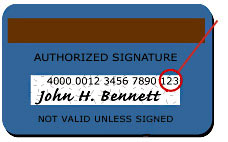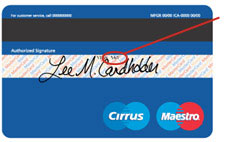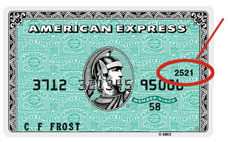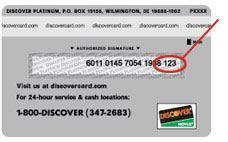Credit cards
The Conference Engine™ accepts all major credit cards and processes payments in real time. Payment authorization requires usually 10 to 20 seconds and after it is finished, transaction receipt is being printed.
![]() Security notice: During credit card processing we use Secure
Socket Layer (SSL) technology certified by a digital certificate,
with strong 256-bit encryption to ensure that sensitive data cannot
be read by third parties.
We do not store credit card data after the transaction has
been authorized.
Security notice: During credit card processing we use Secure
Socket Layer (SSL) technology certified by a digital certificate,
with strong 256-bit encryption to ensure that sensitive data cannot
be read by third parties.
We do not store credit card data after the transaction has
been authorized.
What is a Card Verification Value (CVV)?
Card Verification Value (CVV) provides an additional level of online fraud protection. The number is located on your credit card and is generally three to four digits long. See below for examples of number placement on the credit cards.
|
A three digit non-embossed number on the back of the card printed within the signature panel after the account number. |
|
A three digit non-embossed number on the back of the card printed within the signature panel after the account number. |
|
A four digit non-embossed number on the face of the card. |
|
A three digit non-embossed number on the back of the card printed within the signature panel after the account number. |
CVV is a new authentication procedure established by credit card companies to further efforts towards reducing fraud for internet transactions. It consists of requiring a card holder to enter the CVV number in at transaction time to verify that the card is on hand.The CVV code is a security feature for "card not present" transactions (e.g., Internet transactions), and now appears on most (but not all) major credit and debit cards. This new feature is a three- or four-digit code which provides a cryptographic check of the information embossed on the card. Therefore, the CVV code is not part of the card number itself.
The CVV code helps ascertain that the customer placing the order actually possesses the credit/debit card and that the card account is legitimate. Each credit card company has its own name for the CVV code, but it functions the same for all major card types. (VISA refers to the code as CVV2, MasterCard calls it CVC2, and American Express calls it CID.)
The back panel of most Visa/MasterCard cards contain the full 16-digit account number, followed by the CVV/CVC code. Some banks, though, only show the last four digits of the account number followed by the code. To aid in the prevention of fraudulent credit card use, we now require the 3 or 4 digit code on the back of participant's credit card. When credit card information is submitted, the data is protected by Secure Socket Layer (SSL) technology certified by a digital certificate.


 VISA
VISA MasterCard
MasterCard
 American Express
American Express Discover
Discover